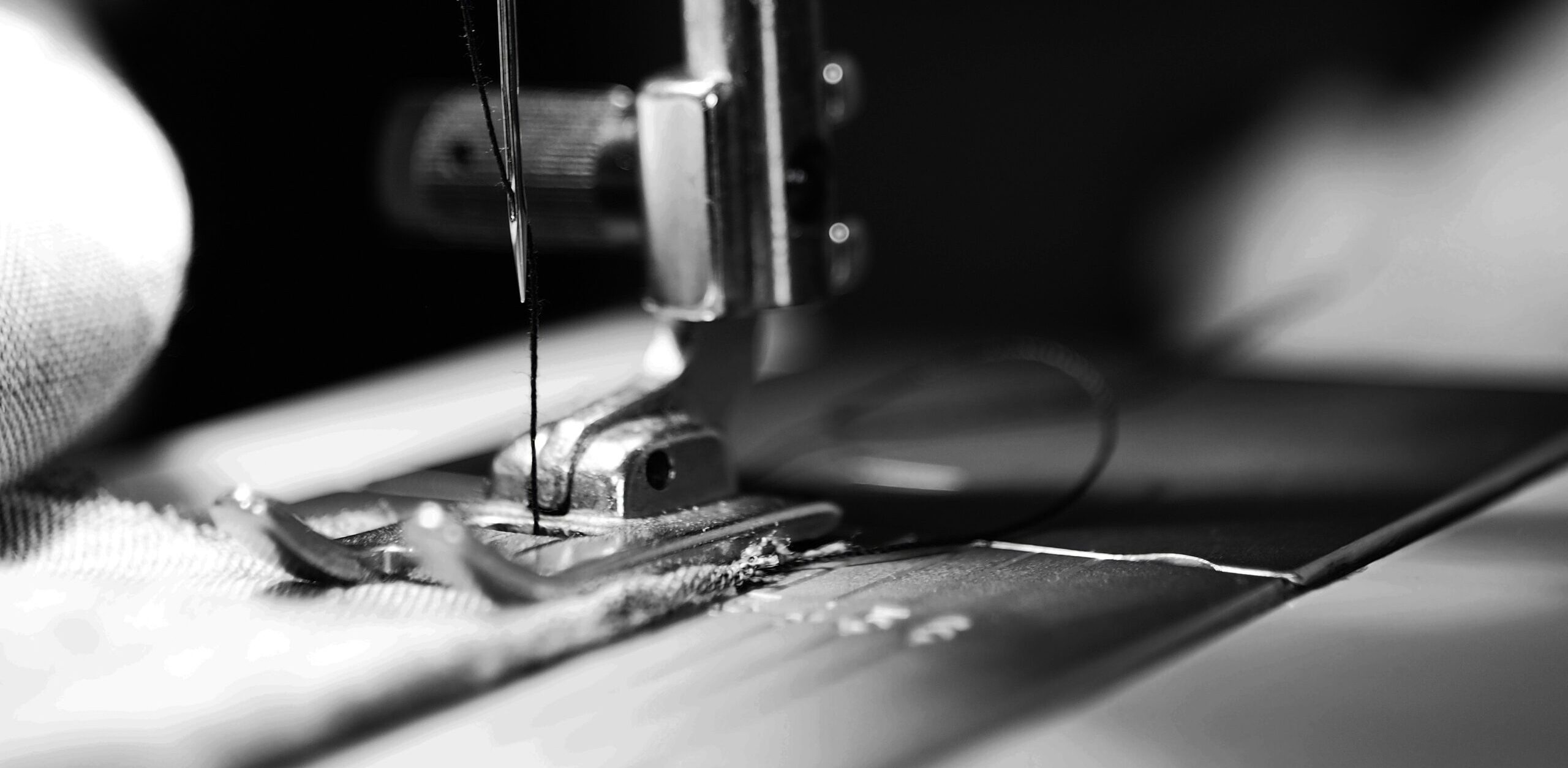Our product developer Mathijn on sustainable production
Sustainability has always been an important topic for NOMAD as a producer of outdoor gear. We sat down with our product developer Mathijn and asked him all about his vision, experiences, and knowledge in this field. Mathijn has been working at NOMAD for over 20 years and has always been passionate about designing and developing new collections. He knows better than anyone where NOMAD stands when it comes to sustainability.

Hey Mathijn, how have you seen NOMAD grow in terms of sustainability over the years?
“From the very beginning, our mission has always been to make only ‘long-lasting products,’ and that remains unchanged. With improved techniques and materials, products now last even longer, which is already a positive change. Since 2017, the use of environmentally conscious materials and techniques at NOMAD has increased rapidly, from recycled fabrics for sleeping bags and backpacks to dyeing and printing with less polluting ink. The down we use for our sleeping bags is RDS (Responsible Down Standard) certified, and all products are completely PFC-free (free of harmful chemicals).
When developing a product, we always have to weigh whether using a particular material affects the quality. Fortunately, environmentally conscious materials and techniques have become more accessible and increasingly meet technical requirements. Years ago, that was different; there was a huge gap in quality between recycled and virgin tent fabric, especially in terms of tensile strength or wear resistance. The quality standards have improved significantly, making them more usable in our industry. As a result, demand and usage have increased, and the price difference between regular and recycled fabric has decreased by at least 75%. That’s a real change I’ve witnessed.
I also see a decrease in the use of animal-derived materials. Their usage is becoming more restricted, and for down, more synthetic, long-lasting alternatives are emerging, such as our Helixthermo and Polarshield filling.”
How do you ensure sustainability is considered when developing new products?
“Our core approach is to find materials with the lowest possible carbon footprint. We achieve this by using recycled materials whenever the product allows. However, a product must always function properly. Every product has functional requirements, such as weight, tensile strength, or waterproofing for a tent fabric. Once we define these functional needs, we first search for recycled versions of the necessary materials to create a responsible product. Luckily, we are succeeding more and more!
As a brand, we always aim for our products to last as long as possible. Even the strongest products can wear out or break with frequent use—it’s unavoidable. Every product has weak points because it’s a utility item. Therefore, when developing a product, we pay extra attention to these weak spots by making smart material choices and ensuring the product is constructed in a way that allows for repairs. For example, if your tent wears out over the years, we always have spare parts available and offer repair solutions.
We always provide repair kits with our mats, tents, and bags. In short, we design all products to have a long life, but if they do break, they should be repairable. We want to lower the barrier for consumers to repair their product rather than buy new. Often, a new product isn’t even necessary! A used product is also much more beautiful, in my opinion—it gives a product a story.”
What choices are made regarding transport and packaging?
“Packaging is simple: as little as possible! We try to keep our packaging as minimal as we can. Our sleeping bags and sleeping mats have come in recycled stuff sacks for years. These are made from plastic bottles and are 100% recycled.
If a product really needs to be packaged, we usually use recycled cardboard. In some cases, we cannot avoid using a plastic bag (recycled PE-bag) for transport. This is mainly because a shipping container is not waterproof, and packaging in (recycled) plastic prevents mold formation.
Regarding transport, our goal is to keep production as close to home as possible, ideally producing locally. However, local production is challenging due to the lack of local factories with the right skills or materials to make most of our products. Fortunately, our socks and their raw materials come from Europe. For other products, we have no choice but to manufacture in the Far East. For transport, we consciously choose Rotra, a partner that prioritizes environmental friendliness and sustainability. Rotra is the first freight forwarder to be 100% climate-neutral and aims to lead the transition to an emission-free transport sector. They are not always the cheapest, but they are a responsible choice.”
And what about social responsibility?
“Each country has its own rules and regulations, and we have our own specific requirements. We only work with factories that are BSCI (or similar) certified. BSCI stands for 'Business Social Compliance Initiative,' ensuring that factories adhere to ethical standards such as fair wages, safe working conditions, and the prohibition of child or forced labor.”
Which products would you recommend to the conscious traveler?
“For conscious travelers, I would definitely recommend the NOMAD backpack collection. This collection is made from recycled materials and built to last!
I also recommend the Inca Premium sleeping bag series, which is fully made from recycled materials, from the seams to the filling. That is a huge step forward and proof that you can create a high-tech product in a fully sustainable way. Sustainable, technically advanced, and comfortable. This way, we uphold our core values while adding even more sustainability.”
